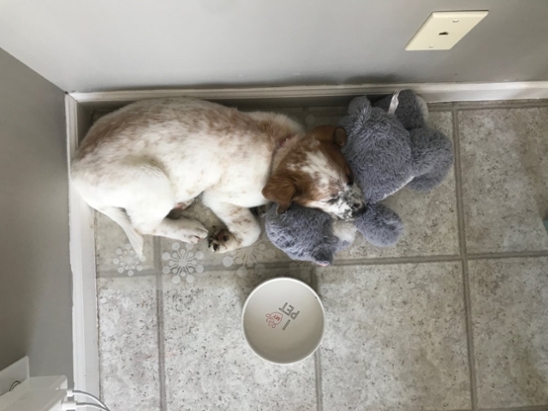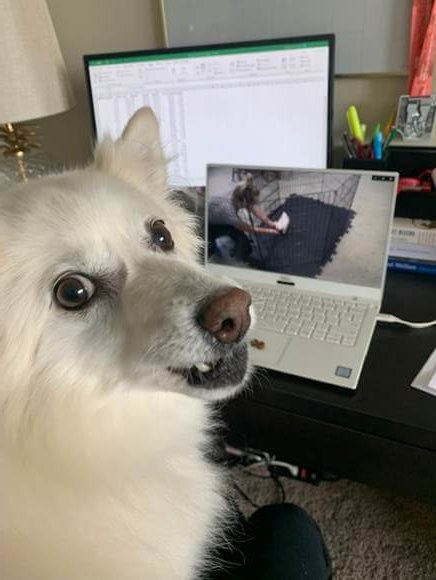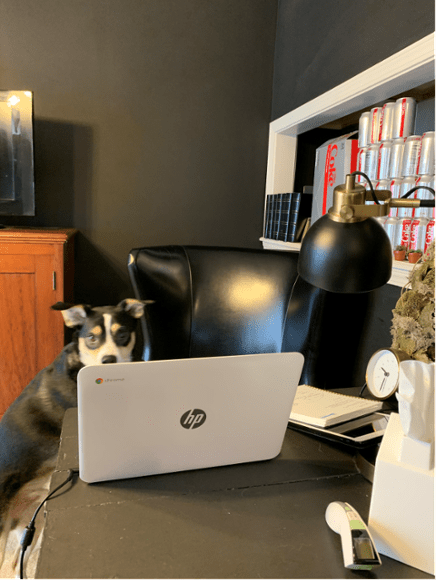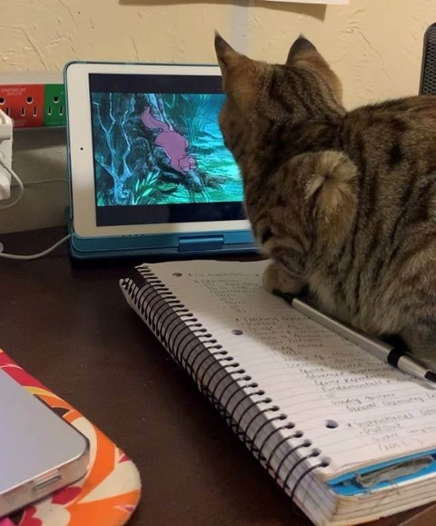Managing your “fur-workers”: Supporting your pets while working from home
"A
downside of working from home is that many of my important work conversations are interrupted by what I have begun to refer to as my fur-workers,” said Candace Croney fondly describing her cat, Bernie, and Havanese mix Desi. “They like to help me out by announcing the end of the world is coming because a delivery arrived or walk across my keyboard to end a web conference without my consent.”
Croney, professor of animal behavior and well-being and director of Purdue’s Center for Animal Welfare Science, is used to sharing her workspace with companion animals. The same cannot be said of millions of Americans now working from home due to the outbreak of COVID-19.
Croney offers some thoughts about benefitting from and adjusting to new “fur workers.”
What are the benefits associated with having pets at home?
Companion animals are wonderful stress-buffers. It’s well-documented that people who own pets, especially dogs, find them helpful under times of stress. They provide psychological benefits in terms of comfort, reassurance and social support. This is particularly true with people who live alone with a companion animal. They are serving roles and meeting needs that many people are probably under-appreciating, not to mention the well-documented physical benefits they also facilitate.
However, in situations like this, it’s important to remember that our pets are able to pick up on the stress that we’re experiencing. That can definitely impact how stressed they are. Dogs are quite attuned to our emotional states and often respond accordingly. All of this emotional support that our animals give us can therefore come at a cost to them. We want to pay attention to what they are communicating so that while they give us that great support, we can support them in turn.

What are some of the best ways to support dogs and cats while working remote?
Since so many people are home now and because we will eventually go back to work, it’s important to set our companion animals up for success by setting a routine for them. I’ve been trying, imperfectly, to implement this myself. Pets do better when they have predictable routines, and this can help their people as well.
For example, if a dog knows when walks will occur, he won’t add additional stress to his humans by asking for one every six minutes. We need to establish a structured routine they can learn, remember and predict.
Also, our pets need breaks from us from time to time. If you have the opportunity to work in a separate room away from your pets, do so and make sure they are well occupied during those times.
It is also important to simulate leaving the house to keep them practiced at being comfortable with not having constant access to you. When you eventually go back to work, it won’t set them up for success if they are suddenly deprived of constant attention.
We need to understand that animals have individual personalities. There are some pets who don’t necessarily want constant interaction. With us at home all the time, especially with larger families, we need to make sure they’re not being overstimulated. We should set up safe spaces at home where they can choose to retreat and have downtime. Particularly for cats, a quiet and warm, dimly lit space is ideal for resting (that’s not a bad set up for people who need a break, either!).
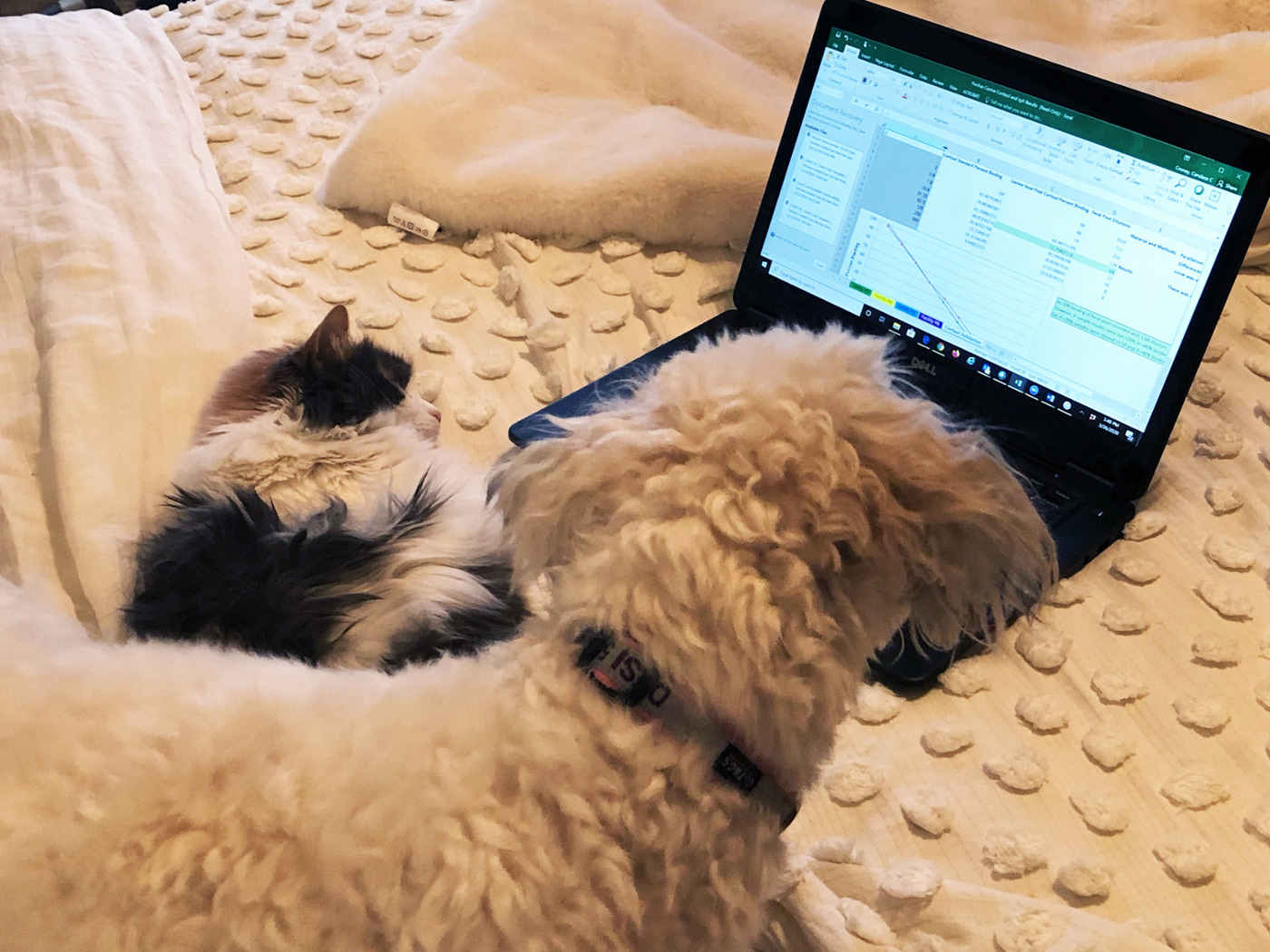
When you can’t give your pets one-on-one attention, it’s important they have things that occupy them and that are safe for them to use. For dogs, giving them high-value favorite toys and treats to keep their minds engaged is great, particularly puzzle toys.
The same things are important for cats. You can use puzzle feeders and preferred toys that they don’t get at other times. Give these at times that are particularly busy for you, where you need them not to be disruptive. And remember to change out the items from time to time to make sure they remain fun and exciting.
You’d be surprised how much enjoyment cats can get out of boxes and how creative dogs can be at offering new behaviors you can reward for interacting with cardboard boxes. Imagine what they could do with all those toilet paper rolls we’ve been hoarding! Small pets like rabbits and rodents can be greatly entertained by having food hidden in discarded toilet paper rolls.
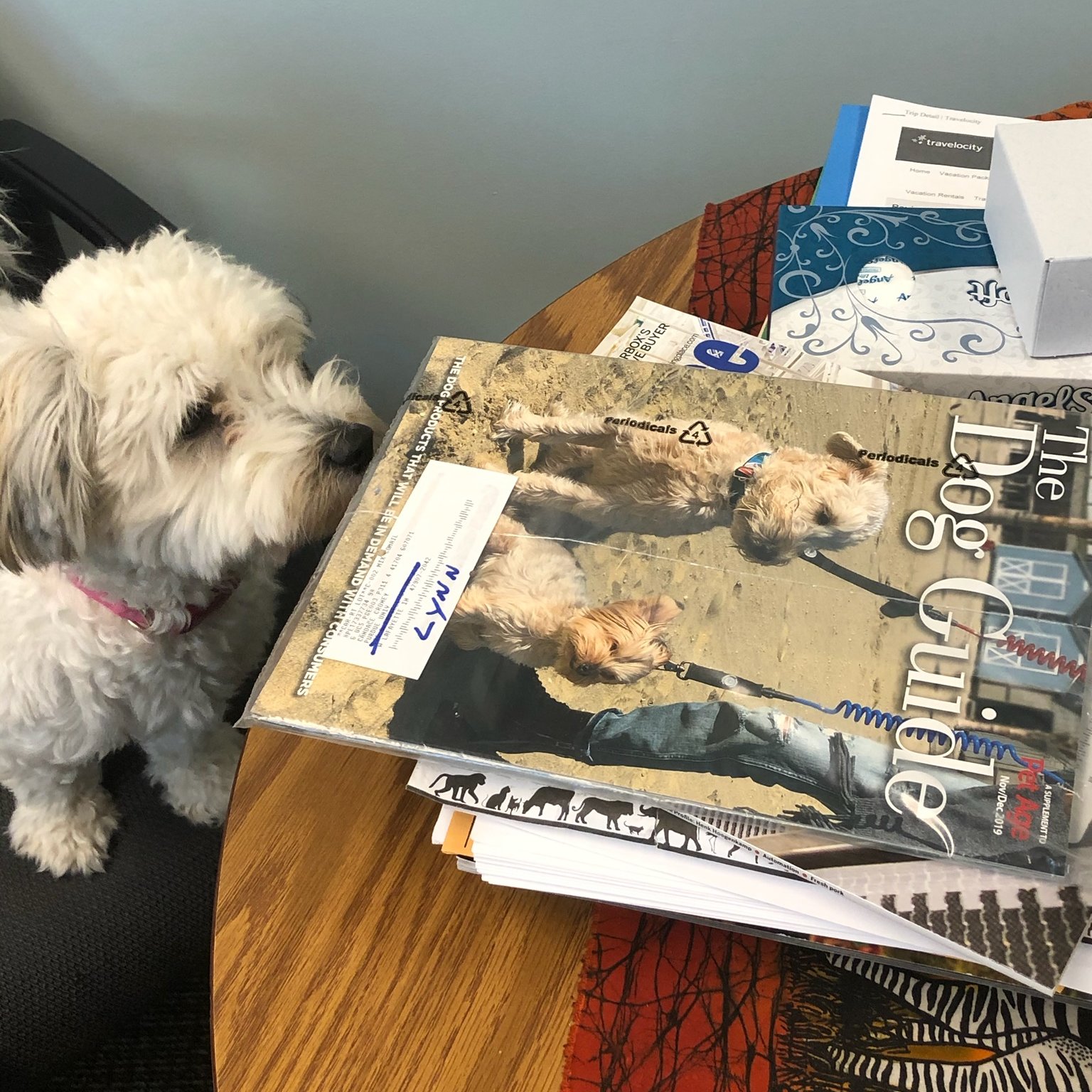
If you are stuck indoors while quarentining or self-isolation, how can you make sure your pet gets enough exercise and activity?
I think many people underestimate how important mental stimulation is to companion animals. If you are in a situation where they are restricted in terms of opportunities for physical exercise, step it up with as much mental enrichment as you possibly can. You can be creative around the home by letting them hunt for their food, hiding it in different places. This is also a good time to practice obedience and learn new tricks. Use hallways, basements and other safe indoor spaces to practice recalls while playing fetch. Depending on how much space you have, obstacle courses can be set up, even just by rearranging a couple pieces of your furniture (which can be exercise for you too!). Cats can be entertained and exercised by using vertical spaces like shelves to perch and jump onto for treats, catnip, or feather toys.
Can my dog or cat transmit the COVID-19?
We don’t know enough yet to definitively say that pets can or can’t be carriers. In light of that, we should all be cautious in terms of avoiding having them lick our faces, especially our noses and mouths, and making sure we practice good hygiene. As always, we should wash our hands scrupulously after interacting with our pets. There may be nothing to worry about with our cats and dogs, but taking precautions is the safest route at this point.
There has been a sharp increase in pet adoptions since the coronavirus outbreak, what are your thoughts on the trend?
I think it’s fantastic, and as we tell people during the holidays, pet adoption may not be the best idea for people who are thinking short-term. You should not get a pet to primarily get you through a rough period of time. Owning a pet is a life-long commitment. If you are not sure you can keep that commitment, it is probably better to volunteer to foster a pet. That way you are still helping the shelters and the animals and you’re not setting an animal up for a failed human-animal bond and surrender (or re-surrender) to a shelter when things return to normal.
How is your research team adjusting to their new fur-workers?
It’s been great! I’ve actually asked my entire lab to share their interactions through our weekly progress reports and lab meetings. Here are some that we would like to share.
Photos & Captions provided by Candace Croney and her colleagues:
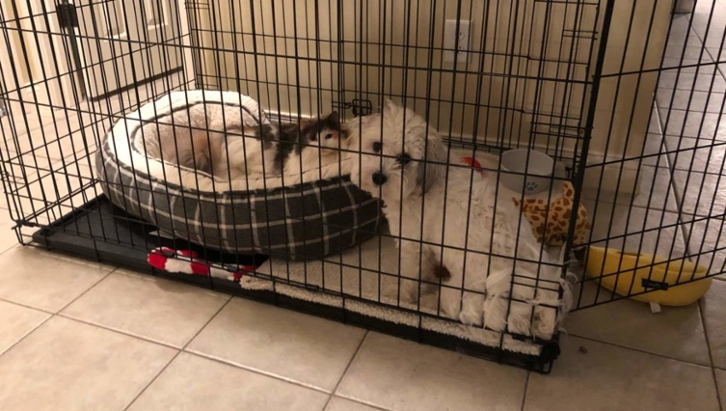 (Candace Croney's cat, Bernie and dog, Desi) Shortly after management was called about the data intrusion caught on film earlier, Bernie decided to sequester herself from the puppy. Obviously her choice of location was poorly thought out, but she did not care. So far disciplinary letters have had no effect.
(Candace Croney's cat, Bernie and dog, Desi) Shortly after management was called about the data intrusion caught on film earlier, Bernie decided to sequester herself from the puppy. Obviously her choice of location was poorly thought out, but she did not care. So far disciplinary letters have had no effect.  Jennifer Weller (behavior postdoc) thinks her fish are slacking as they are reading journal articles very slowly.
Jennifer Weller (behavior postdoc) thinks her fish are slacking as they are reading journal articles very slowly. Where can pet owners go for additional information and resources during the pandemic?
The American Veterinary Medical Association is providing some great information on their site. Your primary veterinarian is also an excellent source of information. Of course, Purdue has the College of Veterinary Medicine. Our doctors are a wonderful resource year-round, even when we don’t have a pandemic going on. That said, we have some renowned experts in infectious diseases who are veterinarians. Many of them are in Comparative Pathobiology, where I am based. There are many great resources right here in our own community as well as on a national scale.

